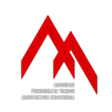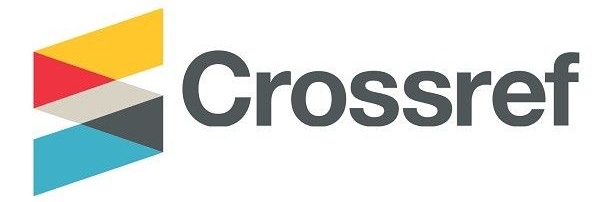Kajian Pola Sebaran dan Perubahan Tipologi Permukiman Desa Celuk – Sukawati Menggunakan Citra Satelit
DOI:
https://doi.org/10.21776/ub.ruas.2022.020.01.2Keywords:
Celuk village, urban pattern, settlement typology, satellite imageryAbstract
Celuk Village as an icon of the silver industry in Bali has experienced a significant development of spatial patterns. This is influenced by the geographical location of Celuk Village which is an area bordering the suburbs of the City of Denpasar. Because land reserves that can be occupied in the City of Denpasar are decreasing, this triggers physical development to spread towards the outskirts of the city, thus causing the phenomenon called urban sprawl. Due to the expansion of physical development, as well as changes in rural forms, it will certainly affect the form of settlements and changes in their urban patterns. This study uses a deductive-quantitative method through a case study approach. Geospatial data using satellite imagery from Google Earth is processed through ArcGIS software. The results showed that there were changes in traditional settlements due to the addition of new functions and population growth, as well as the presence of non-traditional buildings as a result of the expansion of the village area due to economic growth, diverse community backgrounds, and urban spatial expansion.
References
Abedin, S. J. H., & Stephen, H. (2019). GIS Framework for Spatiotemporal Mapping of Urban Flooding. Geosciences (Switzerland), 9(2). https://doi.org/10.3390/geosciences9020077
Aguilar, A. G. (2008). Peri-Urbanization, Illegal Settlements and Environmental Impact in Mexico City. Cities, 25(3), 133–145. https://doi.org/10.1016/j.cities.2008.02.003
Agusintadewi, N. K. (2016). Pola Spasial Permukiman Tradisional Bali Aga di Desa Sekardadi, Kintamani. Review of Urbanism and Architectural Studies, 14(2), 47–57. https://doi.org/10.21776/ub.ruas.2016.014.02.5
Anjulian, L., & Nurman, A. (2017). Analisis Perubahan Penggunaan Lahan di Kecamatan Pekanbaru Kota Tahun 2007 dan Tahun 2014. Tunas Geografi, 6(2). https://doi.org/10.24114/tgeo.v6i2.8673
Arcana, I. K. F., Sudharsana, M. G., & Kardinal, N. G. A. D. A. (2018). Perubahan Pola Permukiman Tradisional di Desa Belandingan, Kecamatan Kintamani Akibat Bantuan Perumahan Pemerintah. Jurnal Anala, 6(1). https://doi.org/10.46650/anala.6.1.637.83-99
Asencio, E. K., Parker, R. N. (2009). GIS and Spatial Analysis for the Social Sciences: Coding, Mapping, and Modeling. Ukraine: Taylor & Francis.
Christian, Y., Asdak, C., & Kendarto, D. R. (2021). Analisis Perubahan Penggunaan Lahan di Kabupaten Bandung Barat. Jurnal Teknotan, 15(1). https://doi.org/10.24198/jt.vol15n1.3
Destin, Z., & Narottama, N. (2020). Strategi Diversifikasi Produk Wisata Untuk Menarik Minat Kunjungan Wisatawan di Desa Celuk, Kabupaten Gianyar. JURNAL DESTINASI PARIWISATA, 8(1). https://doi.org/10.24843/jdepar.2020.v08.i01.p09
Dovey, K., & Ristic, M. (2017). Mapping Urban Assemblages: The Production of Spatial Knowledge. Journal of Urbanism, 10(1). https://doi.org/10.1080/17549175.2015.1112298
Dwijendra, N. K. A. (2003). Perumahan dan Permukiman Tradisional Bali. Jurnal Permukiman “Natah.â€
Farizki, M., & Anurogo, W. (2017). Pemetaan Kualitas Permukiman Dengan Menggunakan Penginderaan Jauh dan SIG di Kecamatan Batam Kota, Batam. Majalah Geografi Indonesia, 31(1). https://doi.org/10.22146/mgi.24231
Gorelick, N., Hancher, M., Dixon, M., Ilyushchenko, S., Thau, D., & Moore, R. (2017). Google Earth Engine: Planetary-Scale Geospatial Analysis for Everyone. Remote Sensing of Environment, 202. https://doi.org/10.1016/j.rse.2017.06.031
Habibah, H. R. W. N., Suharno, S., & Muryono, S. (2019). Aspek Tata Guna Tanah dalam Pertimbangan Teknis Pertanahan Untuk Mewujudkan Pembangunan Berkelanjutan. Tunas Agraria, 2(1). https://doi.org/10.31292/jta.v2i1.18
Hapsari, A. D., & Aulia, B. U. (2019). Tipologi Wilayah Peri Urban Kabupaten Sidoarjo Berdasarkan Aspek Fisik, Sosial, dan Ekonomi. Jurnal Teknik ITS, 7(2). https://doi.org/10.12962/j23373539.v7i2.34248
Hari Mardiansjah, F., & Rahayu, P. (2019). Urbanisasi dan Pertumbuhan Kota-Kota di Indonesia: Suatu Perbandingan Antar-Wilayah Makro Indonesia. Jurnal Pengembangan Kota, 7(1), 91–110. https://doi.org/10.14710/jpk.7.1.91-108
Iqbal, L. O. S. M., Surya, B., & Syafri, S. (2021). Kutub Pertumbuhan dan Gentrifikasi Pada Kawasan Pinggiran Kota Makassar. Urban and Regional Studies Journal, 3(1), 13–22. https://doi.org/10.35965/ursj.v3i1.607
Kakembo, V., & van Niekerk, S. (2014). The Integration of GIS Into Demographic Surveying of Informal Settlements: The Case of Nelson Mandela Bay Municipality, South Africa. Habitat International, 44. https://doi.org/10.1016/j.habitatint.2014.09.004
Karina, R. K., & Kurniawan, R. (2021). Identifikasi Penggunaan Lahan Menggunakan Citra Satelit Landsat 8 Melalui Google Earth Engine. Seminar Nasional Official Statistics, 2020(1). https://doi.org/10.34123/semnasoffstat.v2020i1.514
Kartikakirana, R. A. (2021). Identifikasi Urban Spatial Structure Menggunakan data Spasial Google Earth dan Google Maps. Jurnal Pengembangan Kota, 9(1), 1–12. https://doi.org/10.14710/jpk.9.1.1-12
Lahoti, S., Kefi, M., Lahoti, A., & Saito, O. (2019). Mapping Methodology of Public Urban Green Spaces Using GIS: An Example of Nagpur City, India. Sustainability, 11(7). https://doi.org/10.3390/su11072166
Loureiro de Matos, F. (2018). Urban Morphology: An Introduction to The Study of The Physical Form of Cities, By VÃtor Oliveira. Journal of Urban Affairs, 40(8). https://doi.org/10.1080/07352166.2018.1470872
Marshall, F., & Dolley, J. (2019). Transformative Innovation in Peri-Urban Asia. Research Policy, 48(4). https://doi.org/10.1016/j.respol.2018.10.007
McKinlay, A. (2020). The Future of The Fringe: The Crisis in Peri-Urban Planning. Australasian Journal of Environmental Management, 27(4). https://doi.org/10.1080/14486563.2020.1847387
Medeiros, E., Brandão, A., Pinto, P. T., & Lopes, S. S. (2021). Urban Planning Policies to The Renewal of Riverfront Areas: The Lisbon Metropolis Case. Sustainability (Switzerland), 13(10). https://doi.org/10.3390/su13105665
Niandyti, F., Sufyandi, Y., & Utami, W. (2019). Dampak Pembangunan Industri Terhadap Perubahan Penggunaan Tanah dan Kesesuaiannya dengan Tata Ruang (Studi di Kabupaten Semarang Provinsi Jawa Tengah). Tunas Agraria, 2(2), 184–207. https://doi.org/10.31292/jta.v2i2.35
Pimpler, E. (2017). Spatial Analytics with ArcGIS: Use the Spatial Statistics Tools Provided by ArcGIS and Build Your Own to Perform Complex Geographic Analysis. India: Packt Publishing.
Pradnyaswari Anasta Putri, N. P. R., Gunawarman, A. A. G. R., & Ningsih, N. L. A. P. (2020). Potensi Permukiman Perajin Perak Tradisional Berbasis Arsitektur dan Ekonomi Kreatif di Desa Celuk, Gianyar. Undagi : Jurnal Ilmiah Jurusan Arsitektur Universitas Warmadewa, 8(1). https://doi.org/10.22225/undagi.8.1.1908.37-44
Prandi, E., Lamberto, A,. Bradecki, T,. Schroder, U., Balducci, V. (2021). Mapping Urban Spaces: Designing the European City. (n.d.). United Kingdom: Taylor & Francis.
Putra, M. N. R., Tilova, U. D. N., Salsabila, F., & Sigit, A. A. (2021). Analisis Perbandingan Pemanfaatan Peta Citra Desa Menggunakan Google Earth Dan Teknologi Drone Unmanned Aerial Vehicle (Uav) (Studi Kasus di Desa Janti, Kecamatan Polanharjo, Kabupaten Klaten Jawa Tengah). Seminar Nasional Geomatika. https://doi.org/10.24895/sng.2020.0-0.1170
Rahayu, S., Murjainah, M., & Idris, M. (2019). The Effect of Google Earth Utilization on Students’ Spatial Thinking Ability. Geosfera Indonesia, 4(3). https://doi.org/10.19184/geosi.v4i3.13350
Rukmana, S. N., & Cahyaningtias, S. (2021). Pola Sebaran Proses Urbanisasi di Kecamatan Taman, Kabupaten Sidoarjo. Jurnal Kawistara, 11(1). https://doi.org/10.22146/kawistara.63539
Rupini, A. A. A. D., Dewi, N. K. A., & Sueca, N. P. (2017). Implikasi Alih Fungsi Lahan Pertanian Pada Perkembangan Spasial Daerah Pinggiran Kota (Studi Kasus: Desa Batubulan, Gianyar). Jurnal Ilmiah Arsitektur, 5(2), 9–18. https://ejournal.warmadewa.ac.id/index.php/undagi/article/download/405/287
Simamora, A., Subiyanto, S., & ah, H. (2012). Analisis Perubahan Zona Nilai Tanah Akibat Perubahan Penggunaan Lahan Di Kota Denpasar Tahun 2007 Dan 2011. Jurnal Geodesi Undip, 1(1).
Wisudawati, N. N. S. (2018). Potential of Silver Craft Product through to Community-Based for Tourism Sustainability in Celuk Village. International Research Journal of Management, IT and Social Sciences. https://doi.org/10.21744/irjmis.v5i1.588
Wu, Q. Y. (2003). Study on spatial landscape pattern of Yantai City based on RS and GIS. Chinese Geographical Science, 13(3). https://doi.org/10.1007/s11769-003-0026-3
Yusri, N. (2017). Identifikasi Penyimpangan Penggunaan Lahan Dan Pola Ruang (Studi Kasus Kecamatan Koto Tangah). Jurnal REKAYASA, 7(2), 31–44. http://ejurnal.bunghatta.ac.id/index.php?journal=JRKY&page=article&op=view&path%5B%5D=11394
Downloads
Published
How to Cite
Issue
Section
License
Authors who publish with this journal agree to the following terms:
- Authors retain copyright and grant the journal right of first publication with the work simultaneously licensed under a Creative Commons Attribution License that allows others to share the work with an acknowledgement of the work's authorship and initial publication in this journal.
- Authors are able to enter into separate, additional contractual arrangements for the non-exclusive distribution of the journal's published version of the work (e.g., post it to an institutional repository or publish it in a book), with an acknowledgement of its initial publication in this journal.
- Authors are permitted and encouraged to post their work online (e.g., in institutional repositories or on their website) prior to and during the submission process, as it can lead to productive exchanges, as well as earlier and greater citation of published work (See The Effect of Open Access).












